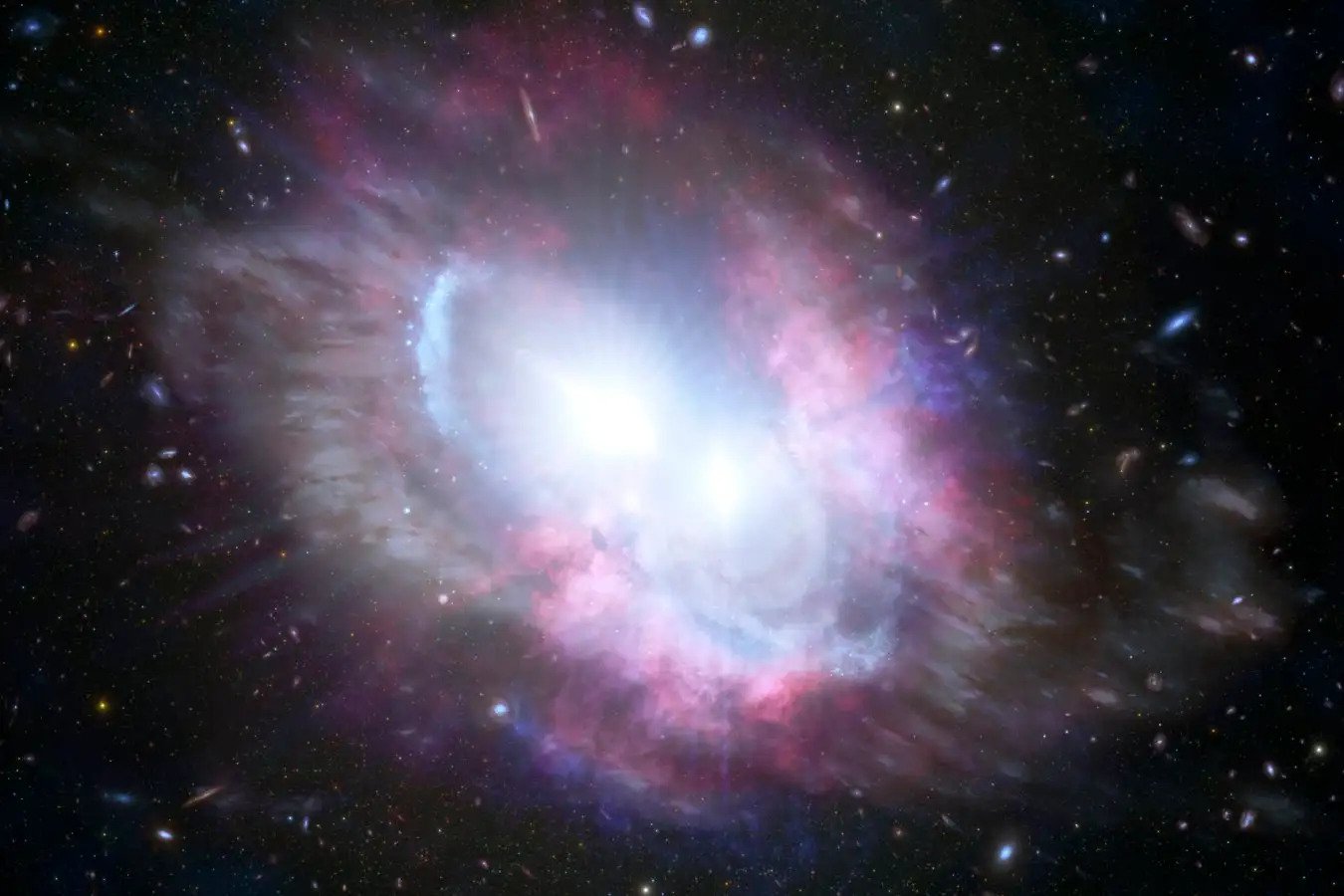A study of three quasars has shown that each of them forms “superbubbles” of nebulae in the shape of a peanut. Thus, supermassive black holes are involved in the formation of galaxies in which they are located.

Scientists saw “superbubbles”
Astrophysicists from the USA, China and Germany have published studies of three quasars, which they made using the Gemini North Telescope located in Hawaii. Near each of these objects, they found giant “superbubbles” with a diameter of 65 thousand light-years each.
Quasars are supermassive black holes, similar to the Sagittarius A* object, which is located in the center of the Milky Way. Only, as a rule, they are larger and absorb a large amount of matter, part of which turns into radiation, thus, they can be seen across the universe.
Scientists have long suspected that they should also strongly influence the movement of matter inside their galaxies and thus influence their evolution. However, exactly how this happens has remained unclear until now.
Open “superbubbles” help to understand how this happens. They are nebulae formed from ionized gas under the influence of radiation and shock waves coming from quasars.
Short-term phenomena
The most interesting conclusion obtained by scientists when they investigated “superbubbles” is that in the spectrum of their radiation there is a shift not only to the red region of the spectrum, which would be common at such distances, but also to the blue, which indicates the dynamic processes that occur in them.
The “superbubbles” are approaching the size of the galaxy. However, apparently, they are extremely short-lived structures. Scientists applied hydrodynamic modeling and predicted the evolution of these nebulae over 20 million years. They came to the conclusion that the stellar wind from quasars did not linger in them for a long time, but quickly tore them apart.
It is also noteworthy that the “superbubbles” are very similar to those structures that exist in our own galaxy. However, they are much smaller in size and almost invisible. This may be due to the relative calm of our own supermassive black hole.
According to phys.org
Follow us on Twitter to get the most interesting space news in time
https://twitter.com/ust_magazine

